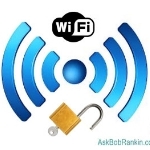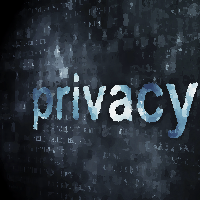
Five Common WiFi Security Mistakes
By Bob Rankin
WiFi networking is convenient and liberating, and essential if you have a laptop or tablet. But if you aren’t careful, using wireless Internet can leave you open to hackers and unauthorized moochers of your Internet service. Here are five of the biggest mistakes that people make with WiFi, and how to avoid them. Read on!
Is Your WiFi Wide Open?
Several years ago, I got a new high-speed Internet service at my home. And then something curious happened. Cars were stopping in front my house, and staying for 10 or 15 minutes. There’s no reason for anyone to stop there, so my spider sense began to tingle. After checking my wireless router, I found that Verizon had left it wide open. Without a wifi password, anyone could connect! I locked it down with an encryption password, and the daily stream of cars stopped.
MISTAKE #1: Failing to enable encryption on your WiFi network lets anyone within range of your wireless router join your network. If file and printer sharing are also enabled, random passersby may be able to sift through everything on every computer on your home or office network. Unencrypted WiFi also allows eavesdropping on your Internet traffic even if the snoop is not connected to your network. Data passing between a computer and a wireless router is broadcast in all directions as far as several hundred feet.
Moochers on unsecured WiFi networks may slow the traffic of authorized users, or even download illegally while leaving the network’s owner with the legal consequences. For these reasons, it’s vital to set up your wireless network to use one of the encryption methods built into all wireless routers.
MISTAKE #2: While you’re locking down your wifi signal, don’t make the mistake of choosing WEP, the oldest and weakest encryption method. It can be cracked in about two minutes using software easily found online. Unfortunately, WEP is often the first option on a router’s list of available encryption methods, so don’t be lazy and choose it for that reason. Use WPA2 encryption with the Personal (PSK) option, for the best protection.
(See my related article Is Your Wireless Router REALLY Secure? to learn how a couple in Minnesota almost got framed for harassment, trafficking in child porn, and threatening the Vice President — all because they used WEP encryption on their wireless router.)
Excerpt shared with permission from Bob Rankin.




